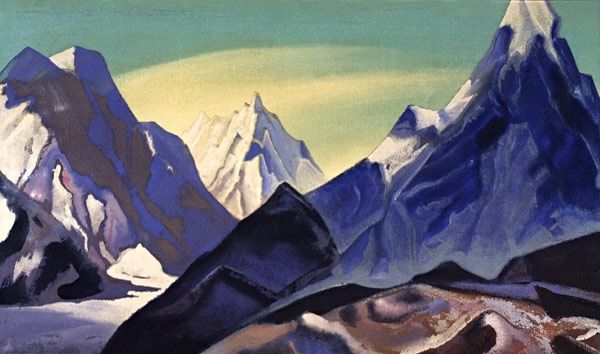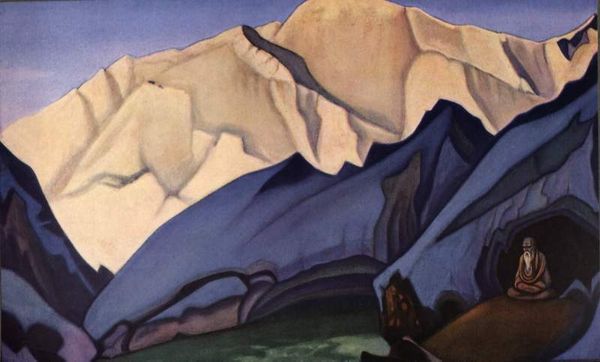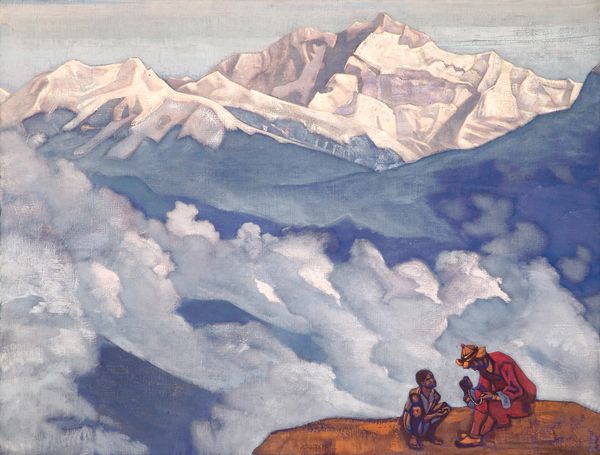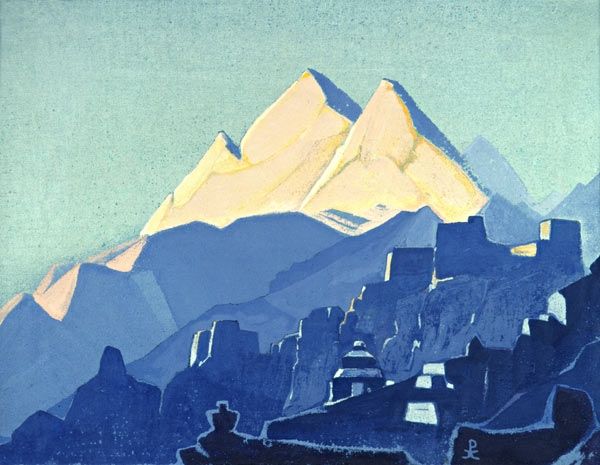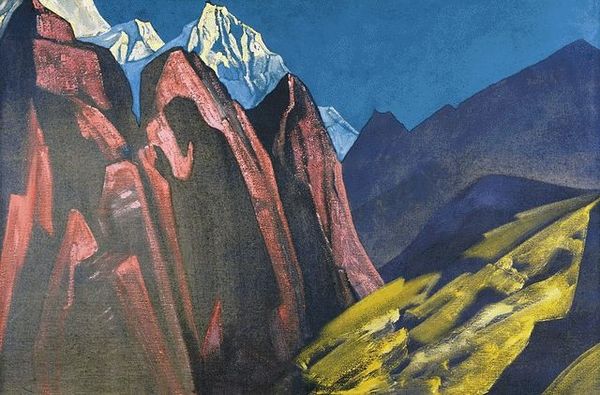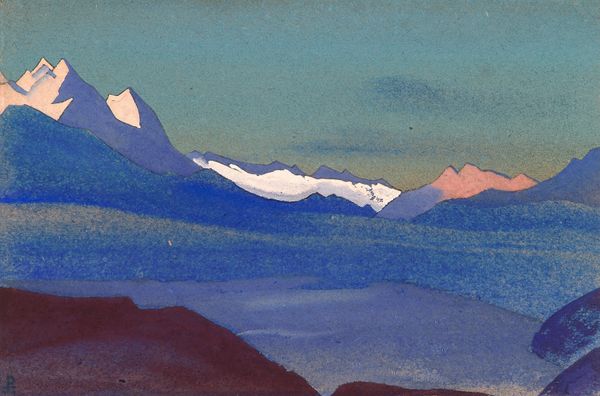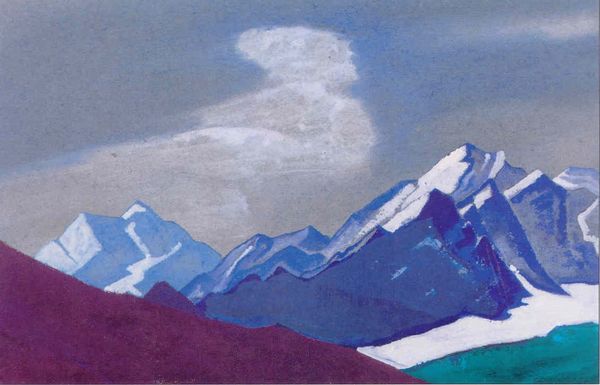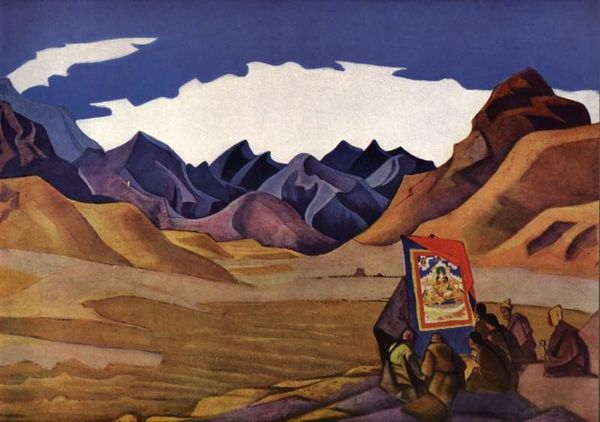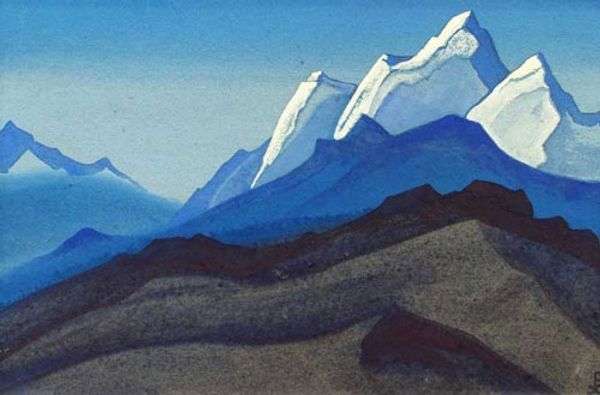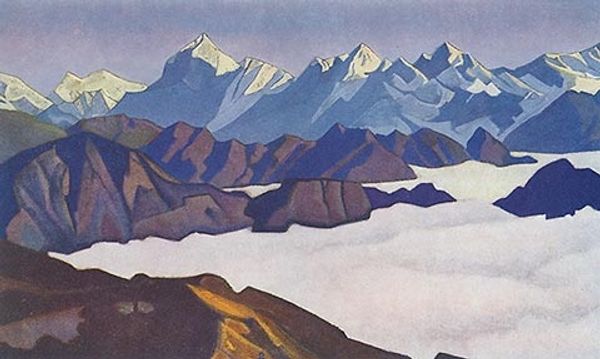
Copyright: Public domain
Curator: Immediately, I’m struck by the sheer monumentality, how the abstracted forms achieve such a sense of sublime scale. Editor: We're observing "Remember," a tempera on canvas crafted by Nicholas Roerich in 1945. Its cultural and historical significance can be connected with the post-impressionism movement, blending landscape elements with orientalism and narrative-art features. It serves to evoke powerful emotions that transcend conventional landscapes. Curator: Exactly! The composition is masterfully divided – that looming, pale mountain range in the background contrasted with the stark, indigo shadows of the foreground hills creates an immense depth. Note how the architectural form on the lower right seems to serve as a counterweight to the mountains. Editor: Yes, the building indeed looks a counterweight and anchors our human existence, yet its cultural roots tie into Roerich’s lifelong fascination with Asian cultures and Theosophy, reflecting how the Russian intellectual elite often idealized the Orient during a time of colonial power plays in Central Asia. His architectural form and solitary wanderer are more than just aesthetic choices; they represent an ideology, don't they? Curator: I am more interested in the aesthetic than ideology. I would say that the stark tonality serves a crucial compositional role. The gradations of blue unify the lower two-thirds of the work, providing a stable base for the almost ethereal mountains floating above. Observe also the precise application of the paint itself. Editor: A detail worth observing: produced in 1945, one can almost see "Remember" as Roerich’s somber reflection on the close of World War II. Consider that Roerich envisioned himself as something of a cultural ambassador of peace. Can "Remember" encapsulate his personal reaction towards this conflict? Curator: A fitting socio-historical reading indeed, giving weight to that small architectural structure we were speaking about earlier. What I first saw as mere formal contrast, now appears like an anchor, tethering these colossal mountain ranges to tangible human memory. Editor: I find I share a new perspective on this piece as well now, appreciating how the stark abstraction emphasizes a universal sentiment—a shared sense of recollection amid immense, often impersonal, historical forces. Thank you.
Comments
No comments
Be the first to comment and join the conversation on the ultimate creative platform.
